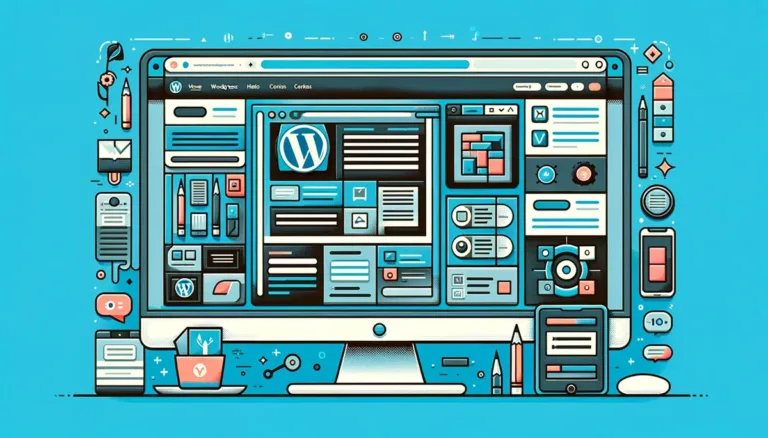How To Optimize Images For WordPress

How To Optimize Images For WordPress – Image optimization for WordPress can do wonders for your website.
Also read: 10 Common WordPress Security Issues and Solutions
A WordPress site with well-optimized images can benefit from faster loading times, improved user experience, and improved SEO.
How To Optimize Images For WordPress
This article will go over four simple methods for optimizing images for WordPress. We’ll also go over the best image optimization plugins and answer some of the most frequently asked questions about WordPress images.
Why Is Image Optimization for WordPress Necessary?
Image optimization on your WordPress website is critical. Here are four reasons for this:
- Improve the speed of your website. Unoptimized images bloat your web pages and slow them down. WordPress can be sped up by optimizing large images without sacrificing quality.
- Improve the user experience. Website visitors are irritated when they have to wait longer than usual for a page to load. For websites that take more than three seconds to load, the bounce rate – the percentage of visitors who arrive on a web page and leave without exploring the rest of the site – is extremely high.
- More effective search engine optimization (SEO). Google and other search engines favor fast-loading websites and penalize slow websites. You are more likely to rank well on search engine results pages if your images are optimized and your website is fast (SERPs).
- Conserve disk space. Optimizing your WordPress images will allow you to make better use of your hosting resources. If your image files take up less space, you will have more room on your website to add other types of content and features.
4 Simple Ways to Optimize Images for WordPress
Continue reading to discover four quick ways to optimize WordPress images.
1. Compress Your WordPress Images
You can reduce the size of images by compressing them. A compressed image file will load more quickly on your WordPress website, increasing its speed.
Using an image compression plugin is the quickest way to compress images in WordPress. These plugins frequently do more than just use compression to optimize images. In one of the following sections, we will dissect two image optimization plugins.
Also read: 7 Solutions: WordPress Featured Image Not Showing
Alternatively, you can use image editing software or a free tool like TinyPNG to manually compress your large images before uploading them to WordPress.
TinyPNG does not accept only PNG images. It supports other image file formats, such as WebP and JPEG. Simply upload the image you want to compress, and the tool will reduce its size for you. The tool can also compress multiple files at the same time.
2. Resize Image
Resizing images’ pixel dimensions is another way to optimize them for WordPress. Fortunately, this feature is built into the core of WordPress.
Also read: Why Use WordPress? 10 Reasons to Start Using WordPress
WordPress by default uses four different sizes of the same image:
- Thumbnail (150 x 150 pixels)
- Medium (up to 300 x 300 pixels)
- Large (up to 1024 x 1024 pixels)
- Full Dimensions (the original image size)
Having said that, you can modify them to suit your needs. Here’s how to change the default image sizes in WordPress using the media library:
- Go to Settings -> Media in the WordPress dashboard.
- Enter the maximum width and height for each size.
- Click the Save Changes button.
3. Use a CDN to Serve Images
A content delivery network (CDN) is a globally distributed network of edge servers that deliver website content such as images, videos, CSS, and JavaScript quickly.
Also read: Website Optimization: How To Speed Up WordPress Site
If your WordPress website employs a CDN, it will replicate your images from the origin server to edge servers around the world. The images will be delivered by the edge servers closest to your visitors.
If your visitor has an Indonesian IP address, for example, an edge server in Southeast Asia will deliver copies of your content, reducing load times.
Cloudflare, KeyCDN, and Sucuri are some popular WordPress CDN providers.
4. De-clutter Your WordPress Media Library
Your WordPress site’s media library will fill up with uploaded images as it grows. While many of these uploaded images will be used on your website, others may go unnoticed. Images from deleted blog posts, for example, will remain in your media library.
Having a large number of unused images in your library can slow down your website, take up a lot of space on your hosting server, and make media management difficult. Creating and restoring site backups will take longer because they will contain more files.
Also read: How to Increase upload_max_filesize WordPress
It is highly recommended that you create a complete backup of your WordPress website before cleaning your WordPress media library. If something goes wrong during the cleanup, you’ll be able to restore your website to its previous state.
Cleaning your WordPress media library can be done manually or automatically using a WordPress plugin.
Here’s how to do it manually by deleting all unused images:
- Navigate to the WordPress admin dashboard.
- Navigate to Media -> Library.
- You can delete unused images either individually or in bulk.
- To delete a single image, right-click it and select Delete permanently.
- To delete images in bulk, select the unused images and then click Delete permanently.
And here’s how to use the Media Cleaner plugin to clean up your WordPress media library:
- Navigate to the WordPress admin dashboard.
- Install the Media Cleaner plugin and activate it.
- Select Media -> Cleaner.
- Scan should be selected. Under the Issue column, the unused images will be labeled “Seems not in use.”
- Select the images to be deleted and then click Delete (number of selected images).
Best WordPress Plugins for Image Optimization
A WordPress optimization plugin optimizes both existing and new images. Consider installing two of the best WordPress image optimization plugins on your website.
1. Image Optimization and Lazy Load by Optimole
Stats for the plugin:
- 80,000+ downloads
- 4.8/5 stars
- Image CDN, cloud media library, and image lazy loading are notable features.
- Freemium pricing (Premium plans begin at $21.18 per month)
Optimole is a plugin that optimizes your site’s images using a global CDN (content delivery network). When combined with a cloud-based solution, Optimole reduces server load and speeds up loading times.
Also read: PHP 8.0: The New PHP Version is Here!
The plugin includes a one-click installation and automated tools. To activate it, simply create an account and enter your API key. The tools will then run in the background, optimizing your images.
The free version of Optimole allows for 5,000 monthly visits. You can get more visits by purchasing one of the two premium plans. The Optimole Starter plan costs $21.18 per month for 25,000 visits, while the Optimole Business plan costs $43.08 per month for 100,000 visits.
2. Imagify Image Optimizer
Stats for the plugin:
- 600,000+ downloads
- 4.4/5 stars
- Auto-optimization, image backup, and online-app integration are notable features.
- Freemium pricing (Premium plan is $9.99 per month)
- Imagify speeds up your website by automatically resizing and compressing various image formats. Imagify can optimize animated graphics in addition to still images.
Normal, aggressive, and ultra compression settings are available in Imagify. Normal compression is lossless, whereas aggressive and ultra compression are lossy. When compared to lossless compression, lossy compression significantly reduces file size at the expense of some image quality.
Also read: How to Start a WordPress Blog: The Easiest Guide
The free plan of Imagify limits users to 20 MB of images per month, with a maximum upload size of 2 MB per image. Meanwhile, for $9.99 per month, the premium version provides unlimited image data.
Conclusion
Image optimization on your WordPress website is critical for increasing loading speed, improving user experience, implementing better SEO, and saving storage space on your hosting server.
Also read: What is WordPress? Your Introduction to WordPress
We looked at four ways to optimize images on WordPress in this article:
- WordPress images should be compressed. To quickly reduce image file sizes without sacrificing quality, use an image editing program or an online tool like TinyPNG.
- Image files should be resized. Change WordPress’s default image resizing settings.
- Use a CDN to serve images. Use a WordPress CDN like Cloudflare to deliver images quickly via globally distributed edge servers.
- Purge your WordPress media library. Using a plugin or manually, remove unused or duplicate images from your WordPress media library.
We hope you found this article useful in accelerating your WordPress website. Best wishes.






